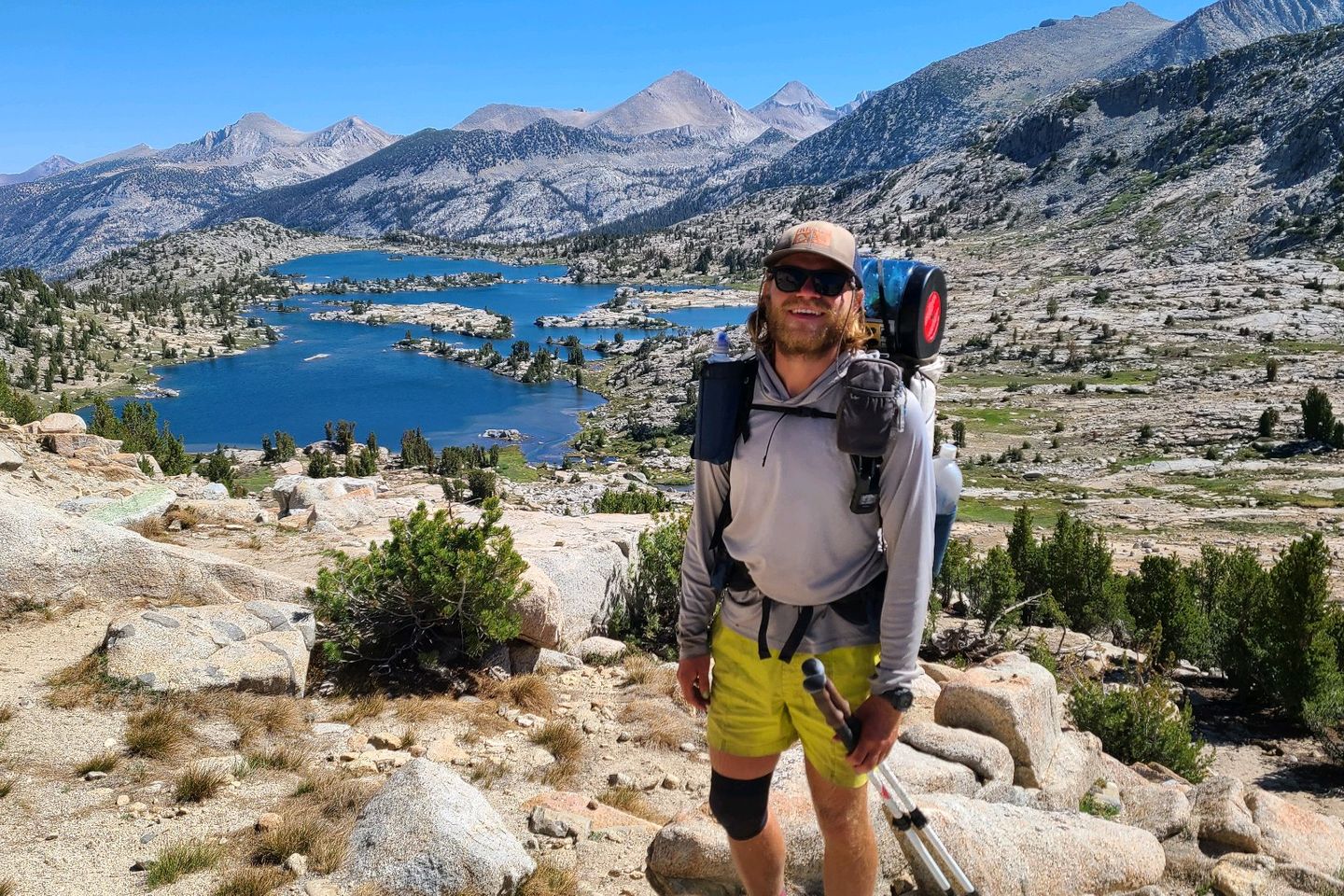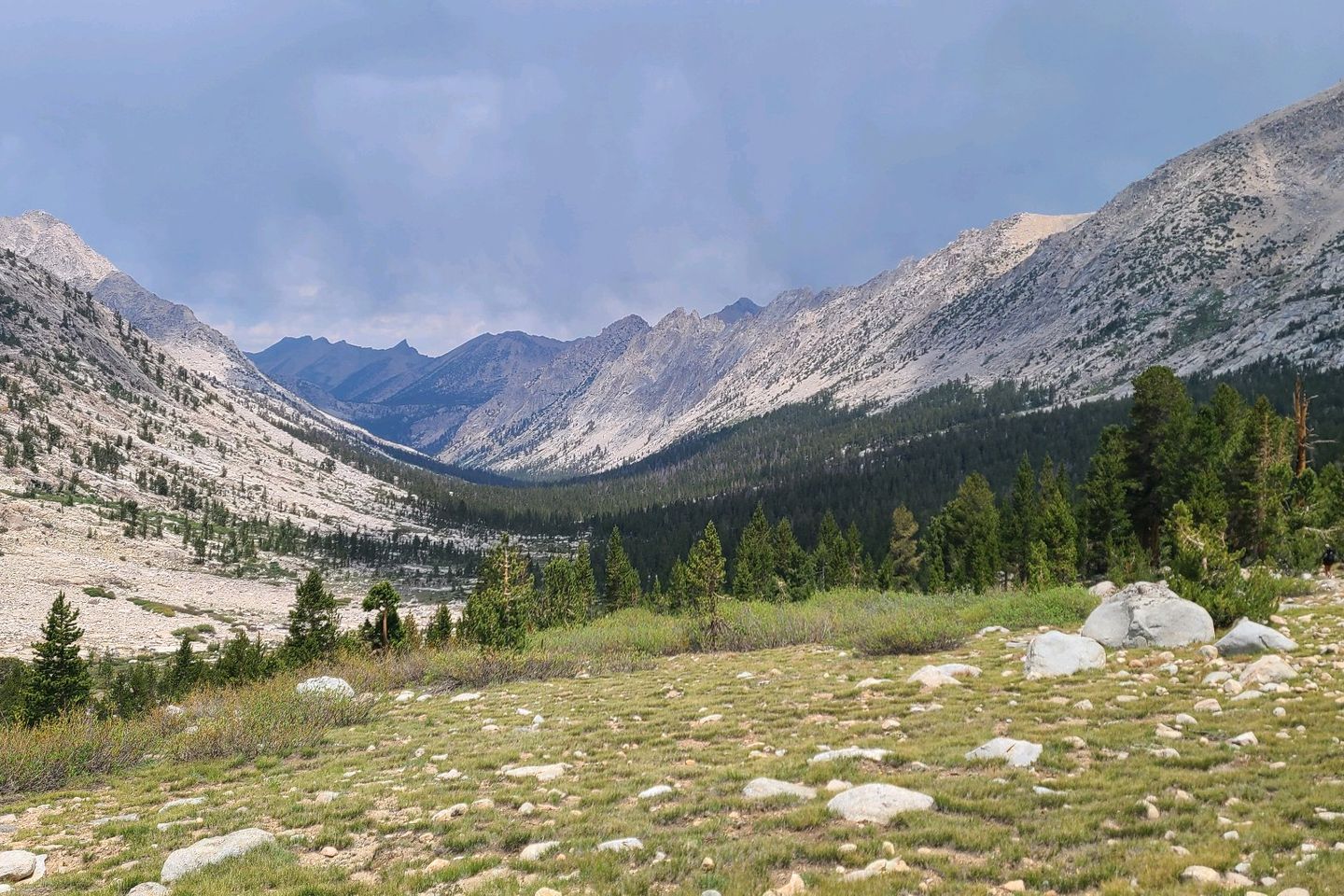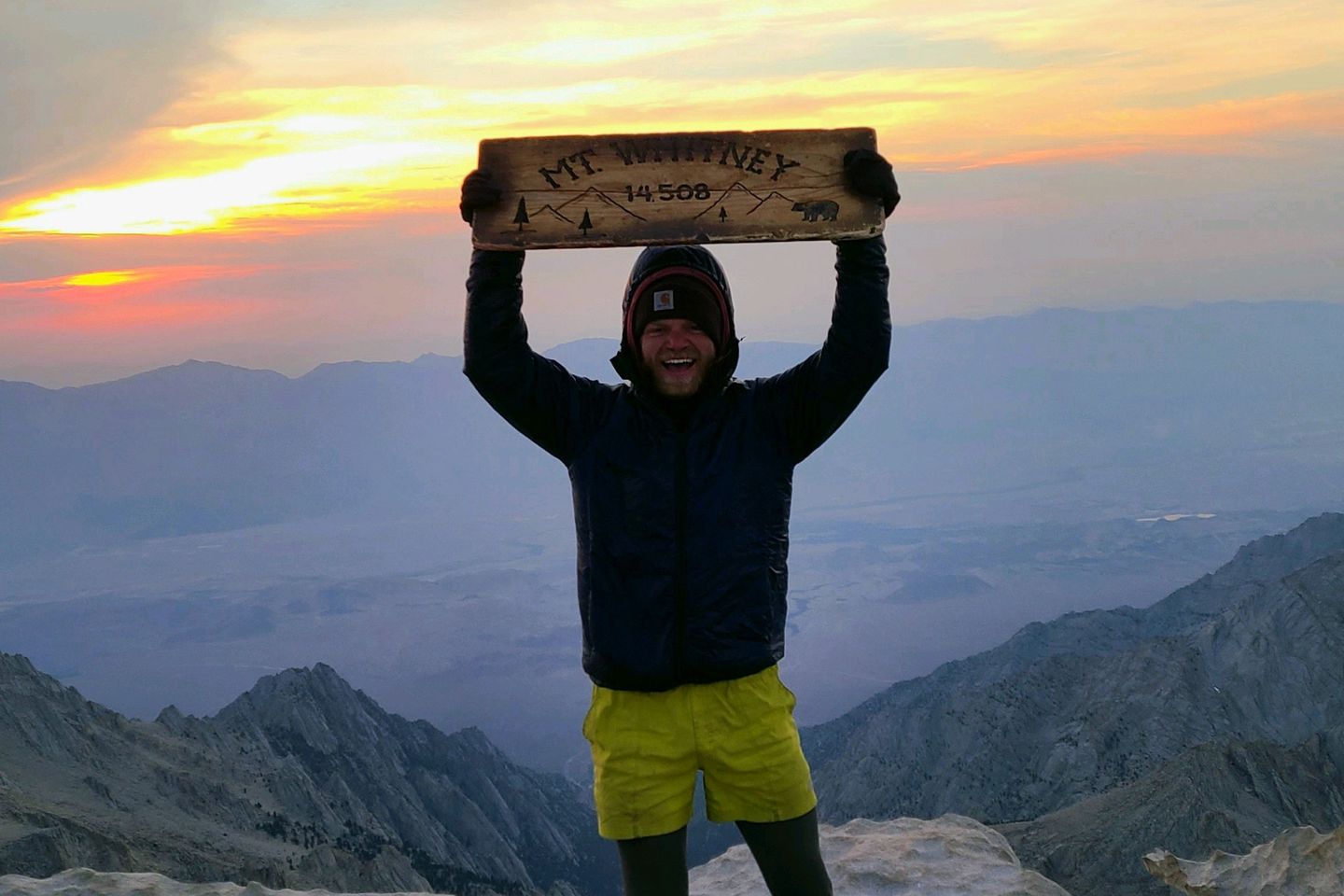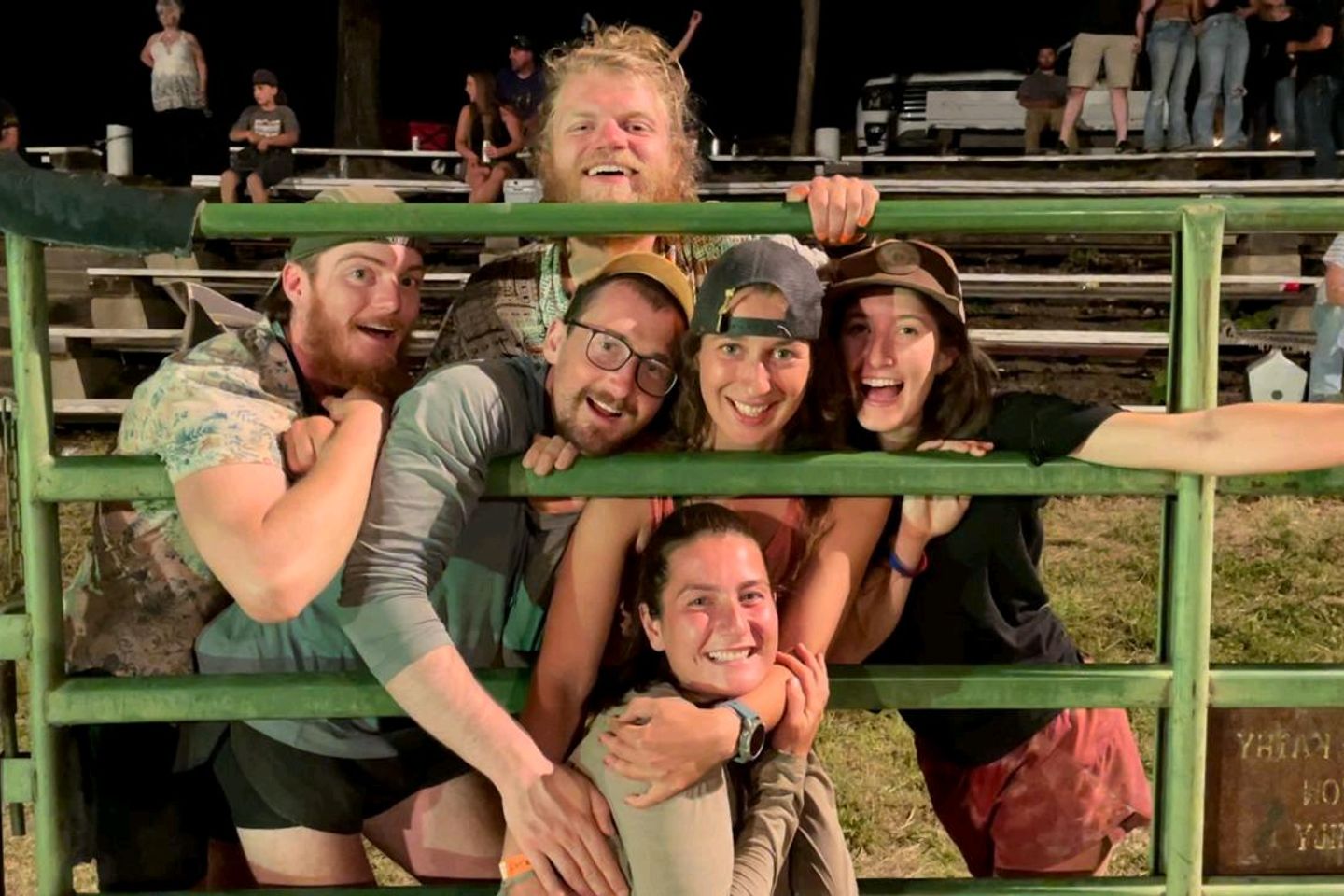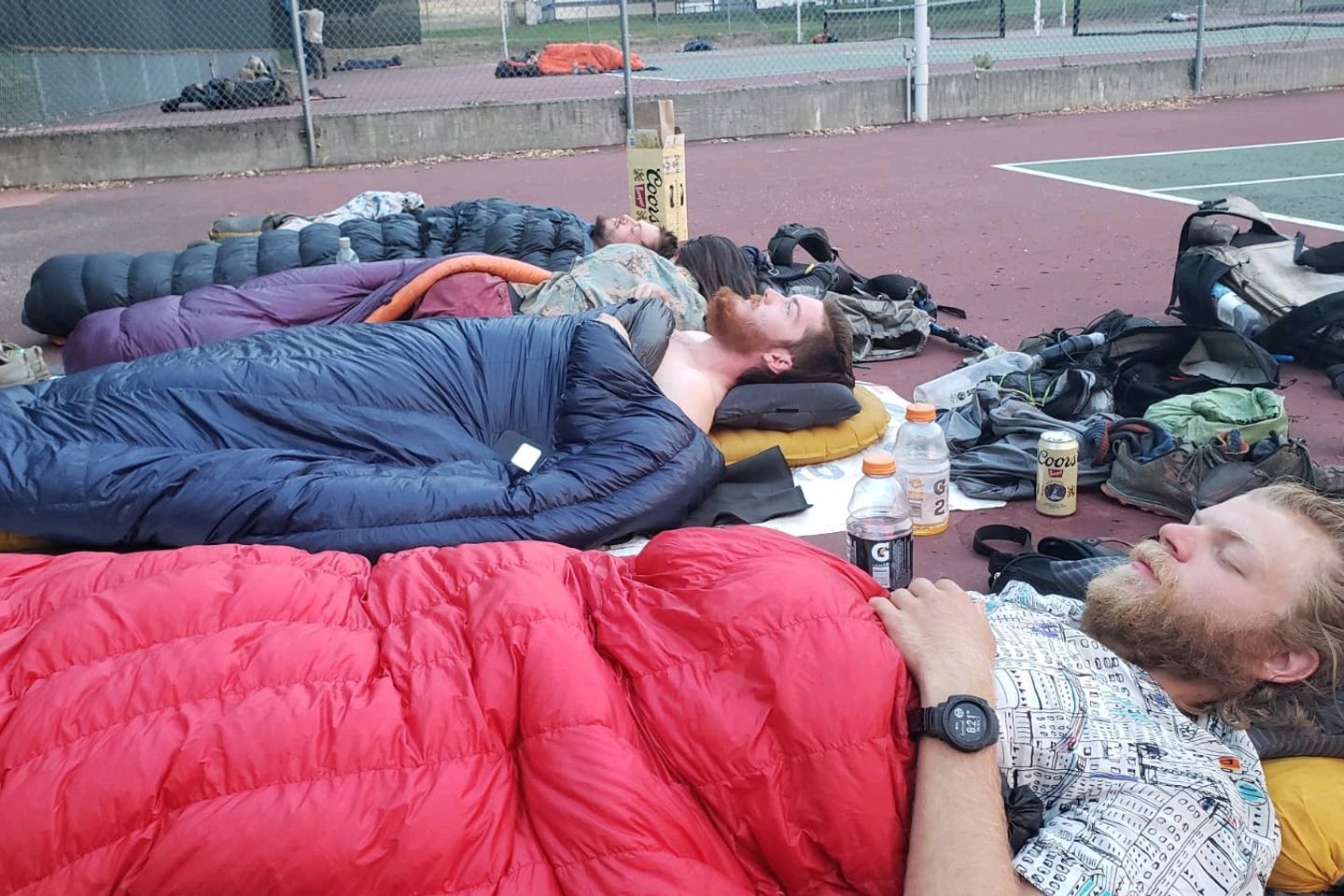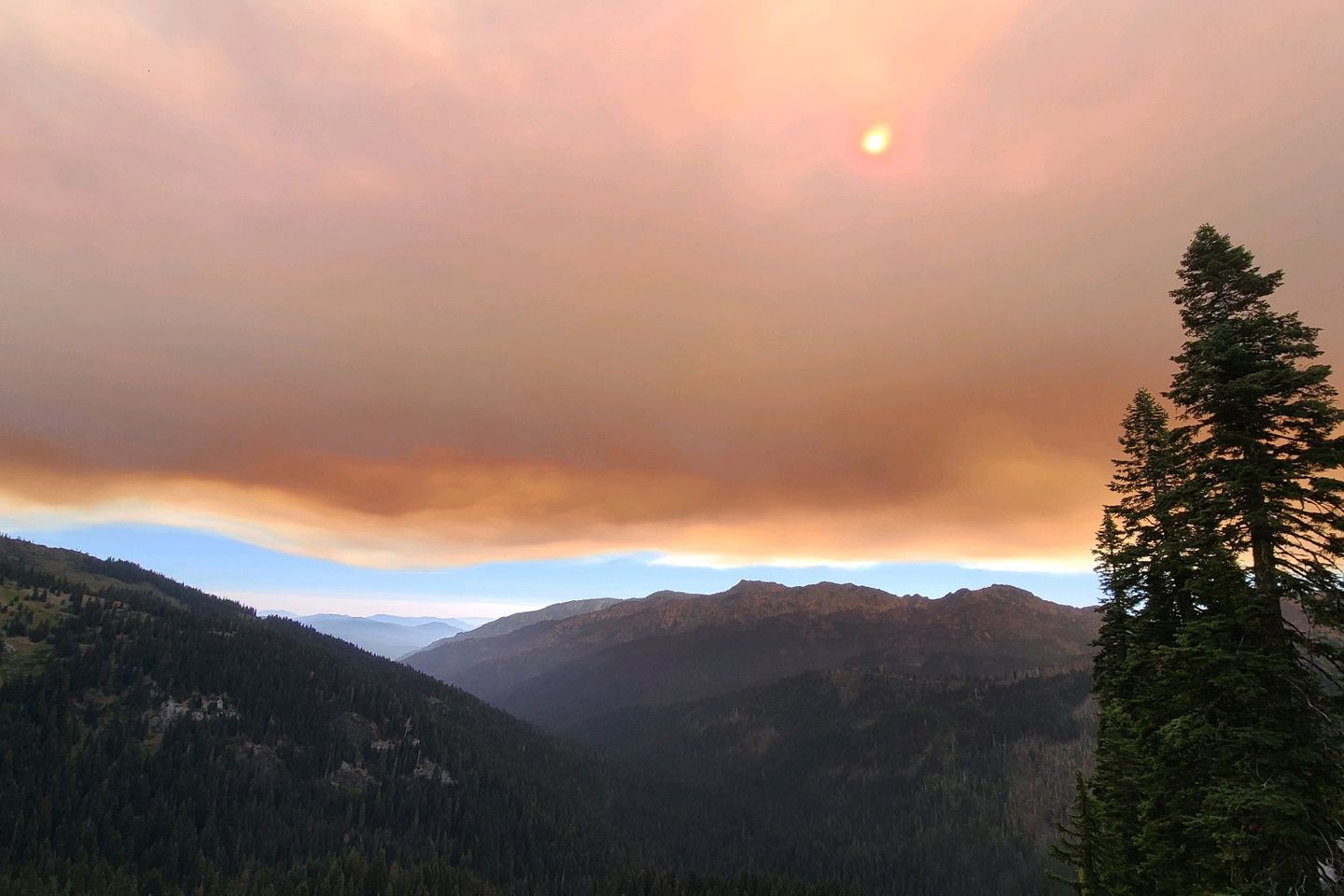Want to document and share your hike with friends and family?
Our App is Available for iOS!
Download it now!
PCT Update 3: They Call Me Hot Sauce
PCT Update 3: They Call Me Hot Sauce
AnthonyFoti Sep 9th, 2021
I'll admit, I've been slacking. I've had half of this written in my notes for weeks now, but I haven't been able to finish it for some reason. I guess a lot of things kept happening as you'll see and I wanted to make sure I was living in the moment for all of it. In this episode I'll take you thru two of the middle sections of the PCT - the Sierra section, and Northern California. Things have changed a lot for me and I've now just crossed into Washington. I'll have another post about Oregon soon since I have more to write about that state that can't fit here. So much changed for me in these two segments and I suppose I needed time to process as well. The trail really got serious on me, and then.. it didn't, and it got way more fun. I've said it so much, but I can't help but feel like this trail is a copy of life. It has segments and chapters and I'm changing in each of them. They each have new lessons for me to learn, I'm a different person after walking through them all. This time I've changed the most and probably more quickly than I ever have before in normal life. Sometimes it's a lot to handle, but I love the change. I'm living for it now, and every single day I've been on trail.
While researching the trail, everyone comes to know Kennedy Meadows as the start of the Sierra section of the PCT. This is important because this 700 miles of trail is some of the most beautiful hiking in the country and world. Most people struggle to get permits to do weekend trips here, and getting a PCT or John Muir Trail permit is even harder. Getting to Kennedy Meadows was exciting but also a bit terrifying. Not only is there going to be more elevation, but there are longer food carries, and all around more stuff to carry. If any section was going to make or break you in terms of physicality, it was here. After a week of desert to get here, I was ready.
Bear Canisters Kennedy Meadows is a point where a lot of people will swap out gear and change their setup. A requirement for this section is you must carry a bear canister to put your food in at night - this way if a bear gets into your food while you are sleeping, they cant get access to it and in turn don't learn that humans are a reliable source of food. So Kennedy Meadows is where everyone has a canister sent along with any new gear they want. It's a scary thought to think a bear could walk into your camp, but it does happen so it's a really important rule. Most times when a bear gets ahold of human food - maybe because some idiot feeds them or doesn't have a bear canister - a lot of times the rangers will have to either struggle to scare the bear back away from human areas, or kill the bear since it becomes a threat and nuisance in the area. As much as we hate carrying the extra 2 pound plastic tub on our back, we know how important it is to keeping a healthy coexistence between humans and nature. Adding it to my pack was a little tricky since it was feeling like I was hitting the max weight limit for my pack. I would consider my actual pack itself to be more "ultralight" so adding more gear and a bear canister to the top of it felt like I was putting a crate of bricks into a Corvette. I think this really added to my injury and struggles later in this section. I will say - the bear canister makes for a great seat during breaks and for cooking so it's not all bad in the end. Make the best of it right?
Mission Start The transition into the mountains wasn't a quick one. One of the first major sightseeing points is a 14 mile side trip up to the summit of Mt Whitney - the highest point in the contiguous United States. An extra 14 miles NOT on the PCT normally would be a no-go, but this one is too important to pass up. Unfortunately, Mt Whitney was a good 4 days after KM, and the next resupply was another 2 days after that, so 6 days of food total. The weight added to the pack required a lot of adjusting, and was a humbling experience when we all thought we had already gotten our trail legs in the desert. The extra food and gear, combined with the increase in elevation change made it feel like we had a lot more growing and learning to do. This section quickly became a lot of hard work, but with each new struggle there was just as much reward and satisfaction to gain. Including getting to the summit of a giant.
Mt Whitney Mt Whitney is a major landmark for most PCTers, though it's not required on the PCT itself. It's a summit mostly everyone takes advantage of since it's only a short trip off trail. Our group made the decision to summit the mountain for sunrise - meaning: getting to the top at 5am and waking up at 12am to start the 7.5 mile hike up to the top. We didn't carry our full packs for this one, just the warm gear we knew we would need at the top. Night hiking is always a good time in my opinion. You can't see anything, so there is nothing slowing you down, its cool, and just a different and fun experience to travel by only headlamp or the moon's light. Naturally, our hike turned into a rock scramble near the top, and after reaching 14,000 feet in altitude, you have to stop every 5 minutes to catch your breath due to the sudden elevation change. The best part about the entire day was the astonishing reveal of the views at at the top, finally unveiling the stunning peaks, valleys, and scale of what we accomplished to get up there. We couldn't see any of it on the way up so getting to the top and having the curtain of darkness pulled back was incredible. The experience was nothing short of amazing. I think I was able to impress myself more by doing another 8 miles later that day, after twisting my knee far too much coming off the mountain and walking down with a really bad case of runners knee. Little did I know I would be nursing this injury for the next few weeks.
Forrester, Passes, and a Dance with Thousands The next major point of this section is Forrester Pass, which is the highest point on the technical PCT. This also happens to be our first major pass. A pass is like a gap or low spot in a string of mountains that lets you get through, but these are usually high points and tough climbs. We later adopt a strategy of saving the passes for the first thing in the morning, when your legs are the most fresh - definitely the way to go. The craziest part is watching the elevation changes through our maps. You could camp at 10,000ft above the treeline, and hike down to 7,000ft into a valley or meadow with a great lunch spot in a dense forest with a raging river full of beautiful waterfalls, then to hike back up another valley to 11,000ft to be 2 miles short of a 12,000ft pass the next morning. You'd be back above treeline and be sleeping next to a crystal clear alpine lake by the end of the day. This was routine for 5-6 passes in the Sierra. Sometimes it really was intense, and grueling, and a lot of work. Every day you are a bit more exhausted than the last, and you could feel that after 6 days of doing passes, you were getting worn out.
I Feel Small Hiking through this section almost felt surreal, like you're living a postcard out in real life. Something you've only ever known through photos is in front of your very eyes and it was hard to grasp in certain moments. You could start the morning in a valley with just rocky, snowy peaks that are so insanely large, only to drop into a dense forest that's rich with wildlife, and maybe a raging river with 100+ waterfalls and features that deserve to be on the cover of their own magazine. I really never knew that so much beauty and purity could exist in this world, and I was getting to be a part of it every single day. The experience was enough to fill someone's soul with enough appreciation and love for the outdoors to last 10 lifetimes.
Snow, and Water Crossings If water was the discussion point between hikers when going through the desert section, then snow is the hot topic in the Sierra. Is it a normal snow year? Higher than average year? What percent lower than average? Basically how much hiking through snow will we have to do? This year, I've heard different numbers but the general consensus is somewhere between 10% - 50% of the normal amount. Way less than normal. I think it was closer to 10 than 50 based on how little we actually had to step on snow. This changes the experience in this section. Snow can make an already challenging hike even more tough and definitely more dangerous. Luckily for us - we are way under average this year, so during the entire hike through the mountains, I only stepped through snow for maybe 50 steps in total. Which is different from other years where hikers would have to do 200+ miles stepping through post holes in snow packed passes. Along with less snow means that the streams and rivers aren't as high as well, meaning we only had two instances of rivers that you actually had to get your feet wet to cross. Honestly this is something most hikers prepare to deal with when they get to this section, and this year we didn't have to deal with it at all. It's pretty fortunate, but in a way there was a piece of the challenge missing from the hike and makes it feel like the experience is now changed.
Water - Not Filtering It Let's talk about water really fast - this section is the only section where I felt it was safe to not filter it before drinking. The only reason for that is because on this hike you can actually see the snowmelt coming from the peaks and taller mountains, that turns into creeks and rivers that you then take water from. You know what environment that water is coming from and it's moving through rocky terrain with little distance for contaminates to enter the source. Most of the tke, you not only see the flowing water but you're hiking next to it throughout the day. It really is the cleanest, coldest water you could imagine and it's everywhere. So different from other places on the trail and a welcome change. There's always a tiny tiny chance you could get that one droplet with giardia that gives you diarrhea for 4 days, but when you're here, and it's as beautiful as it is, what the heck?
Muir Hut One of the last major passes in the Sierra section is Muir Pass. This is one of the taller passes and signifies the end of the more extreme climbing you do in this section. The awesome part is at the top there is an actual stone hut that was built a long time ago, and within the hut you can feel the energy and the history of the mountains and the people that explored them during the growth of the country. There's a lot of background that you can research about this - a lot to do with John Muir himself - but really all you need to know is that these mountains are still a mystery and are still being explored and have been for a long time. At this particular location you could really get a sense that this is an awe inspiring landmark and has been for a lot of people. To make it to this point made me so happy for myself. Happy that I was able to hike myself to this point, and happy I could experience this portion of the trail for all it's worth.
Mammoth to South Lake Tahoe For most of the passes and high points of the Sierra section I was going on one single resupply carrying about 7 days of food. I was able to then jump off the trail near Mammoth Lakes to get a resupply. I also was able to get some town food, a shower, and do some gear shopping. After such intense climbing it was nice to get a break and also have fresh new food to eat. Following Mammoth, things unexpectedly stayed the same in terms of the intensity of hiking. I thought the trail would flatten out and be a less strenuous, but as it turns out it would be just as intense if not more hilly than the Sierra proper. After Mammoth you move into Yosemite National Park and while this was a very beautiful section of trail I found it to be one of the most challenging and relentless parts of my journey so far. Not only was my pack too heavy for the amount of climbing I was doing, but I was also still walking on an injury and ready for easier trail. I remember a particular day in this stretch where I had three major hills to climb over, each over 1500 feet in elevation change and required the entire day to go up the side of a hill, climbing rocks and then back down the other side having to lower myself over giant rock stairs. I think if I were to ever have had a bad day on the trail - and I'm not saying I've had a bad day - but if I did, it would have been somewhere within this section. It was still beautiful, but much more challenging than I was hoping. Luckily at the end of this part was a two day zero and a nice rest for my body - a well-deserved break in South Lake Tahoe.
South Lake Tahoe Experience Getting into South Lake Tahoe around the 4th of July was exciting. I was ready to get off trail, ready to take a break, and ready to feel better after having a tough time over the past week. I wasn't the only one who wanted to be in town over the holiday weekend, so the hostel that I found was packed with other hikers. I think this is one of the first times I started letting myself really let go of the expectations I had, and I really embraced the fun of meeting the other hikers. It was here that I actually made a lot of the friends that I would be hiking with into Northern California. And it was these friends that would pull me into a lot of shenanigans that I never expected to be a part of. We managed to find a brewery with minigolf, play Catan at a different bar, hold a cornhole tournament, create something called "sierra juice" (this is just jungle juice made inside of a plastic bear can), and venture into Nevada for some extra drinking, all in a single day. I wasn't used to this much social time but things started to really click for me in terms of the social aspect of this trail. The hostel was a hub of really laid back and fun people, most of whom I'll never forget.
Trail Name I've been given a trail name. At around the 1000 mile marker, Cleopatra was sick of me contemplating which name I should choose. It's a general rule that hikers can't name themselves, so I was deciding between all the names people had been trying to give me up to that point. She was tired of it, and I don't blame her. So one evening when introducing me to some friends, she picked the name "Hot Sauce" and I just rolled with it. This name comes from the fact that I was carrying the same glass bottle of Chalula for 1000 miles without ever finishing or refilling it. It's heavy, and extra weight, and I had it for far too long, but I like add a splash of hot sauce every now and then so I kept it.
The Fires of Northern California and the Luck of the Trail The most exciting thing about going into the Northern California section was that we were going to soon pass the halfway marker. We only had about two resupply points left until we actually hit the halfway point. Most of us have already seen photos of what the halfway point is like, but actually getting there means a whole lot more than any photo. Something we didn't quite expect to happen so soon was a lot of smoke and the danger of forest fires. We made it through Sierra City and it wasn't until Belden when the danger became very real for us. I managed to camp with a group of friends that I had just made in South Lake Tahoe, and in the morning started a long climb up out of the town of Belden. Near the top of the climb after about 14 miles the air filled with smoke, all views of the valley were gone, and the situation became very real. It wasn't until meeting up with a trail angel 5 miles later that I learned a small fire had started just a few miles from the PCT that morning, and at this moment was not moving closer to our location. What we found out later that night was that the fire did in fact change directions and moved towards the PCT later that day. In turn, the rangers closed off the trail, stopping northbound travel and we were some of the last people to hike in the forest before it's closure and eventual destruction. That fire which was at the time only 1,200 acres expanded to nearly 100,000 acres within a few days and is now known as the Dixie Fire - one of the largest fires that has happened in the country this year. Unfortunately, this was not our last run in with smoke and fire. We would have several more smoky and hazy days in the coming section. I would actually say that more than 80% of my time in Northern California was spent with smoke in the air and a lot of the views diminished to less than a mile. This was a very eye-opening experience for me, turning something I've only heard about into a real and scary situation. As much as it sucks, the crazy part is is we were lucky enough to get to hike through the entire section without being forced off the trail. The hikers behind us and the southbound hikers in front of us wouldn't be so lucky. As I'm writing this now, the entire Northern California section of the PCT is closed. Many hikers with plans of doing the entire trail this year have had to divert, or cancel their trip altogether.
Meeting and Joining a New Group Something I wasn't expecting to do was join a tramily. A tramily is really just a trail-family, AKA a group of friends who decides to make decisions and hike together. The tramily that I decided to join was a group of individuals who I had met on several different occasions and my appreciation for them was growing from the start. Up to this point, I was a solo hiker. I didn't take zeros, and I didn't party in the normal sense. But in this tramily, the focus was on fun. There was no pressure to stay to a schedule, to skip towns, or to miss out on the things you wanted to do instead of hiking. They knew that it was more important that we stuck together and everyone involved created a positive and fun attitude. This is why I decided to slow down and to join a group, something I was so reluctant to do previously. It was also in this group that I learned a lot of lessons about what it means to be a friend, and about adding to an energy and attitude to make it better for everyone involved, even though you come from many different places. I met everyone in the South Lake Tahoe area, but I didn't actually join them until they asked me to come to Chester with them for a zero. I reluctantly said yes since I wanted to keep moving, but I'm glad I did because that zero turned into a double zero in the town of Chico and two of the best days I've had on my trip. We swam in Airdrop's parent's pool most of the day, drinking beer, only to go to a thrift store to pick each other's outfits to head to the bar that night. Popcorn picked me out some sparkly leggings which I have to say looked pretty good on the dance floor in front of a random EDM artist at a local brewery. It was goofy and crazy and we looked like fools but we didn't care. We embraced the wackyness of it. After only a day of officially joining the group I was already seeing why it was so amazing to be in one. We amped each other up and we made sure to never let each other forget to live in the moment. They were teaching me to cut loose, and say yes more, and that the unplanned events can be - and most times are - better than the planned events. I'll never forget those two days in Chico, or the 10+ zeros we took in NorCal and Oregon in the coming weeks after joining the group. I'll truly cherish the memories I had with these people for the rest of my life.
Hike Fast, Drink Fast The trail has some randomness to it. But when you embrace that randomness and really live it up, it can give you an experience like no other. I'll explain some of that randomness here: In Burney we slept in a church gymnasium along with 30+ other hikers (yes it looked like a refugee camp). We also had drinks with the locals at the bowling alley bar across the street that same night. Some guy bought us a round of drinks called a "lumberjack" which is a drink he invented himself (if you're curious its a glass of red bull with a shot of union jack whiskey dropped in). The day after this we hung out for a very long time at the Burney Falls state park playing the game warefolf with a huge group of other hikers, to then hike another 15 miles in the dark. After 7 miles a random hiker challenged us to a "naked mile." We one-upped them by doing the entire last 8 totally nude. Then in Mt. Shasta our group ended up at a saloon in town where we met a man who knew balloon art and was a clown for hire on the side of his forest fighting job. We spent the rest of that night hitting each other with balloon swords and acting like pirates. And then there was Etna... Oh this place. Night #1 was just some simple hiker debauchery at the local park, where we cowboy camped on the high school tennis courts with all of the other hiker trash (once again, refugee camp) surrounded by half-full pizza boxes, beer cans, and hiking gear. Night #2 we actually hitchhiked into the town of Yreka to sleep in a bed and get real showers (and also to hit up the black bear diner which is our favorite. We love diners). Then we returned to Etna, only to learn that there was a rodeo in town that very night. We needed to get back on trail, but shoot... when else will there ever be a rodeo within walking distance the same night you're travelling through. And damn, that rodeo was awesome. We saw barrel racing, cow hide racing, bull riding, bucking broncos, and even a milking race with cow tackling involved, which I was told they invited right in that very town. It was just completely random and so much fun. After the rodeo we went down to the pit and wrestled each other in the sand while a country band played for everyone to dance to. I would have never guessed I would have any of these experiences when I set out on my journey on the PCT - who could possibly think any of this would happen. But I was leaning into that randomness hard and enjoying every ounce of it. It was wild and freeing and we made sure to enjoy as much of it as we could. Our group ended up coining the term "hike fast, drink fast" as a way to explain why we were taking so long to get north.
I Take Back What I Said Okay, I'm realizing now that before I said that the best strategy was to be a solo hiker. That the stress of a tramily and getting attached wasn't the best idea. Well, I would still stick to that, but now I just want to add to it. I would say this: the best strategy is to stay solo but open, and stay away from setting expectations over your hike, until something feels right to YOU and that change is what YOU really want. If others pressure you into something or you come into the trail and force any relationships, it won't work out. Like life, you can't force things. For me, I just really enjoyed each and everyone in the group, and it felt right. Before I met them, staying solo or having my one hiking friend felt right for that time. They were different times and different parts of my journey and I appreciated both of them. In this section, it's been fun and way slower than I thought and I love it for that. The whole experience of being in a tramily is really showing me how important it is that you react to every new experience with a positive attitude. That you say "yes" more than "no." And that thing you thought you didn't want might be the thing you need. I'm a different person because I let go, and I'm finding that I love myself more now than I ever have before in my life, and joining a tramily has been a factor in that. Life is so wonderful if you let it be. Once again like life, the trail provides.
Keep an eye out for my post about Oregon and hopefully soon, a post about finishing the PCT. I'm less than 450 miles from the Canadian border and ready for this last segment of trail. It's supposed to be beautiful! Until then, thanks for reading. :)
Previous: Sep 7th, 2021
Next: Nov 1st, 2021
